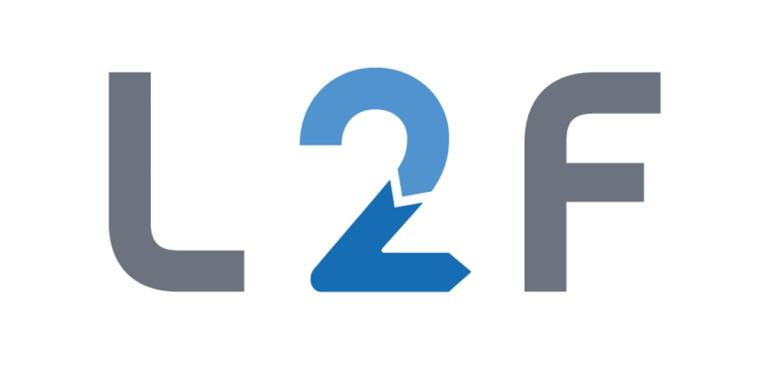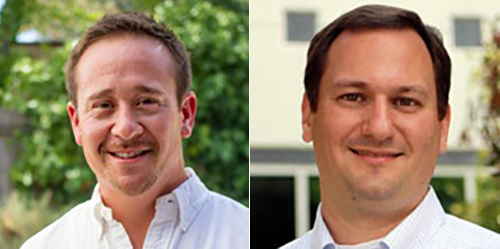
“It turns out that I’m really good at sales because I’ve been an engineer and know directly which customer service actions provide value to the development process and which don’t.”
Derek Pietz graduated from Kettering in 2004 as a statistical anomaly. Due to the strength of the co-op program, nearly 100 percent of Kettering students have a permanent job or are accepted into graduate school within six months of graduation. But Pietz’s employer was in the middle of a tailspin and in the process of going from 700 employees down to zero.
“The Silicon Valley meltdown made it difficult to be a young graduate looking for a job,” Pietz said. “I was the one Kettering graduate that didn’t have a job.”
Pietz completed his co-op at Electroglas, a semiconductor manufacturing equipment company that crashed in the mid-2000s after missing out on the next wave of technology. So he went back home to Fresno, California, without work and only a list of contacts that he could rely on to seek employment. One of his acquaintances was Shawn Lange, a 2001 Kettering graduate, who completed his co-op and worked full-time at Electroglas until 2003.

From 2001 to 2004, one room in Lange’s house was sub-leased to Electroglas co-ops where A and B section students would swap places every three months. Pietz was one of these students and stayed until graduating and moving back to Fresno. Shortly after moving home, Pietz landed an interview with Fremont-based ESCO Manufacturing and headed back out to Silicon Valley.
“If I got an offer, I was taking it because I didn’t have enough money to fill my car up with gas and head back to Fresno,” Pietz said. “I slept on Shawn’s couch the day before the interview and slept on the same couch for my first six months on the job.”
Nine years later, Pietz and Lange would reunite, this time not as roommates but as business partners attempting to revolutionize the industrial manufacturing process.
Chasing Opportunities
Lange chose to travel from the sunny coast of California to Flint, Michigan, because of the opportunity to continue a tradition from middle school – working to earn his means.
“I grew up in a home with a single mother who was a high school English teacher,” Lange said. “I was working since middle school. I was a busboy in middle school.”
During his co-op and professional stint at Electroglas, Lange had the opportunity to be part of a booming company and explore a variety of different opportunities, including control systems development, field services, information technology and lean manufacturing.
“I got this great foundation in manufacturing engineering and operations from Kettering University,” Lange said.
As the company began its demise, Lange enrolled in a graduate program in robotics and controls at Santa Clara University and started anticipating his next step.
“In the year that I was finishing up my masters, I had so much free time and I was reading all sorts of books on business,” Lange said. “I read a book that encouraged acquiring skillsets as opposed to money. Two things that I didn’t have were finance and sales experience.”
In 2004, Lange had three job offers to choose from and he selected the lowest paying opportunity in sales.
“I had never done sales. I wanted to try it. I was scared,” Lange said. “It turns out that I’m really good at sales because I’ve been an engineer and know directly which customer service actions provide value to the development process and which don’t.”
From there, Lange’s career achieved international heights as he moved to Nagoya, Japan, in 2006 to work for Mitsubishi Electric, a Fortune 500 company with more than 100,000 employees. Lange had two different desks in Japan, one in marketing and another in engineering while also being the designated tour guide for English speaking visitors at the plant. He also embraced the challenge of learning Japanese and returned to the United States in 2010 fluent in the language.
“I saw how the core of a global Fortune 500 company works,” Lange said. “I saw the pricing strategy all around the world. I traveled to UK and Spain to release new products. I would go on those trips with one guy from marketing and one guy from engineering.”
While Lange’s career path involved large companies, Pietz worked at smaller engineering firms and technology start-ups in California.
From Esco Manufacturing, Pietz moved on to become one of the first 30 employees at a yet unknown solar start-up. Solyndra would go on to raise more money than any other start-up in history and grew from dozens to thousands of employees within a few years. After achieving the level of Technical Staff and a year before Solyndra filed bankruptcy, Pietz was recruited to join OLED start-up Kateeva. Both of these experiences allowed him to hone his engineering skills but more importantly Pietz saw first-hand how quickly start-ups move and how often they need to pivot, which laid the foundation for his future start-up with Lange.
After each achieving nearly a decade of corporate experience in various manufacturing industries, Pietz and Lange had independently developed the desire to start their own company and all that remained was for them to come together and build it.
Translating a Friendship to a Business Partnership
Pietz and Lange have known each other as roommates and fellow alumni from Kettering but starting a business together was a unique step for their relationship.
“They say starting a business together is a little bit like getting married. I would agree with that idea,” Pietz said. “You end up spending more time together than you do with your spouses. You find the same happy and friction points that you do in a long relationship.”
“Derek and I have really different personalities,” Lange said. “We were roommates for a number of years and good friends for sure but we’re different. When we’re in business, we remind ourselves that we are friends but it’s very business-like.”
Lange had established proficiency in sales and marketing and Pietz in the technical engineering elements of manufacturing. They both knew that they were compatible partners, an assumption that was confirmed by personality testing.
“It [personality tests] also pointed out that we are highly competitive and passionate about things,” Pietz said. “You have two different personalities that are highly competitive. We’re both trying the hardest that we can to solve the problems to the best of our ability.”
The problem that they are trying to solve is highly automated yet flexible manufacturing. Solving this problem allows manufacturers to meet the growing demand from their everyday consumer clients, for customizable, low priced, high quality, locally made product.
Leading the 'Third Industrial Revolution'
“We are on the cusp of the third industrial revolution,” Lange said. “We are really innovating in the manufacturing space and the return on investment for highly automated flexible manufacturing work cells is at a point where it makes sense for anyone shipping significant volumes.”
Lange and Pietz co-founded L2F in June 2011 with the aim of helping Silicon Valley start-up companies accelerate their ramp from laboratory stage to full-scale fabrications (Lab2Fab) by focusing on the manufacturing process while the start-up focused on the core design of their product. The goal is to bring products to market as quickly and efficiently as possible.
“We’d like to get involved as early in the process as we can,” Pietz said. “For some of our clients, it’s very early on. Some of our customers are six people companies, we are helping them overcome preliminary stumbling blocks in manufacturing.”
L2F has grown to 10 full-time employees since May 2013 and has recently had two prominent clients be purchased by a global consumer electronics leader. The company is positioning itself for the re-growth of American manufacturing as the outsourcing trend reaches its course and potentially reverses in the coming decades due to domestic efficiency and increases in global energy prices.
“Right now, the buzz from the industry is big data coming to the plant floor – the industrial internet - going to zero unplanned down time. How you do predictive maintenance and not preventive maintenance.” Lange said. “Manufacturing is coming back to the United States. It’s coming back and we’re right there and it’s really exciting.”
Lange also feels that the trend of the brightest minds at Kettering and other higher education institutions going into the computer sciences will change as manufacturing continues to grow in the United States. One catalyst for the change is robotics and Lange encourages Kettering students to consider studying this field along with industrial manufacturing with the aim of innovating the process and lines as L2F is currently doing.
“The globalization trend is not being reversed but it’s reaching its final conclusion,” Pietz said. “Knowledge is changing so you can have a local economy based on a global supply chain.”
L2F has grown more than 200 percent every year for the past three years and that’s a level of expansion that both Lange and Pietz hope to continue in the years to come. A related goal for both of them – take a step back and acknowledge how far they’ve come since being roommates in the early 2000s.
“We’ve done a pretty bad job capturing milestones and victories. Our very first shipment was at midnight on a Saturday with just me by myself,” Pietz said. “Early on it was usually just Shawn and me pushing stuff out of a loading dock in the middle of the night. Now we have a strong core team and need to get better at celebrating our accomplishments.”